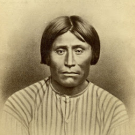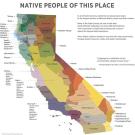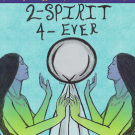The Modoc War and People Today
HSS 8.8, HSS 8.12, RI.8.2, RI.8.3, RI.8.4, RI.8.6, RI.8.9This unit focuses on the Modoc War, a conflict between a small number of Modoc people and the US military in 1860’s and 1870s. The first lesson gives the background information needed to understand the lead-up to the conflict. The second and third lessons focus on different aspects of the conflict, including events and topography. The fourth lesson, the aftermath. A possible extension activity would be a field trip to the Lava Beds National Monument to see the battle sites and gain a deeper understanding of the natural fortifications the Modoc people used to hold off the military.


